How bats shaped the caves: the research of a Gardois revolutionizes knowledge of the underground world
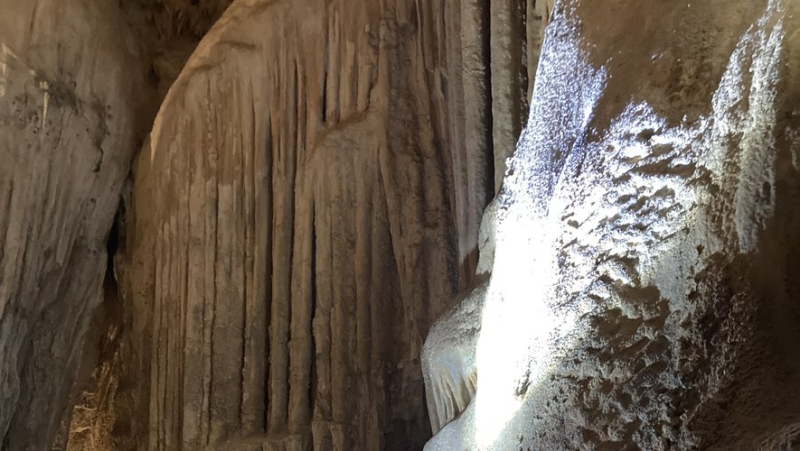
Laurent Bruxelles shows the traces of biocorrosion in the Demoiselles cave. Midi Libre – E.L.
Biocorrosion, or the impact of bat colonies on the morphology of caves, is highlighted by Laurent Bruxelles, researcher at the CNRS and resident of Saint-Hippolyte-du-Fort. The Roquette cave in Conqueyrac in the Gard becomes the international model for studying this phenomenon.
"Years of walking past without seeing. It's as if we were suddenly given glasses to discover what has always been under our noses…"Guilhem de Grully is the owner of the Demoiselles cave, this exceptional cavity dug into the mountain which dominates the Hérault valley, in the town of Saint-Bauzille-de-Putois. Since its opening to the public in 1931, the large room of the cave, "the cathedral", with these exceptional concretions evoking the shape of a virgin and child, has been one of the most popular places in the world. admiration of thousands of visitors.
But since the work of the geo-archaeologist, Laurent Bruxelles, it is appropriate to imagine things differently. Le Gardois is a researcher at the CNRS, his specialty is geo-morphology, in other words the study of landscape shapes and their evolution. This caving enthusiast has just established how the presence of bat colonies in the caves could have had an impact on their shape. Bats inhabit these cavities and which become real architects, going so far as to enlarge the size of galleries, smoothing previously rough ceilings or walls, and probably erasing the parietal art , perhaps much more widespread than what we know today.
"In 2019, I was led to work in Botswana, in caves where there were colonies of up to a million individuals", says the researcher. "In describing the shapes of these caves, it was very surprising to note that they did not correspond to the classic digging that the cave could have done. water in particular. The reason was clearly the alteration by biocorrosion, in other words the respiration of these animals as well as their excrement, modified the shape of the cavity."
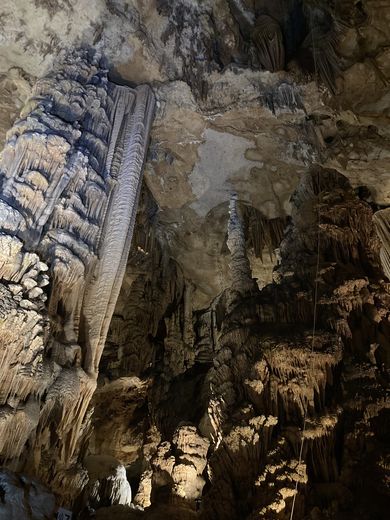
A smooth white mark on the ceiling testifies to the past presence of bat colonies. Midi Libre – E.L.
In 2020, during confinement, Laurent Bruxelles is stuck at home in Saint-Hippolyte-du-Fort. A stone's throw away (and within the authorized kilometer limit!) is the Roquette cave, in the town of Conqueyrac. "It’is a known cave, used by man since the Paleolithic, and explored throughout time, but not accessible to the public. I went there myself as a caver, I took my children, my friends there. But now, I go back a little every day with this question in mind and I notice that the same phenomena have occurred here, with the same intensity."
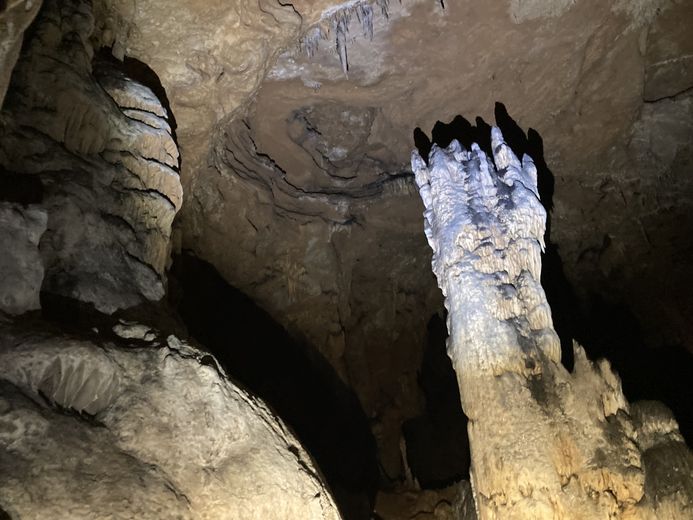
On the ceiling, a hollowed-out part where colonies of bats must have clung and below, a concretion which suffered the impact. Midi Libre – E.L.
Laurent Brussels "revisit" several caves, that of Itzuritz in the Basque Country, where the explanation of the return of the river which would have reshaped the place no longer seems to “stick”. And then the cave of the Demoiselles which he examines in a part not open to the public. "Suddenly, I see him jump on the ground and curiously, it sounds hollow!" remembers, amused, Guilhem from Grully. At this location, the rock was covered with guano. "We probably have a nursery here, analysis Laurent Bruxelles. Bats are nocturnal animals, which enter and leave the cave, but which seek warmth and humidity, which is why they group together in colonies, tight together others. During glacial periods, this insectivorous or frugivorous animal depending on the species, deprived of its food disappears, but is very present in interglacial periods."
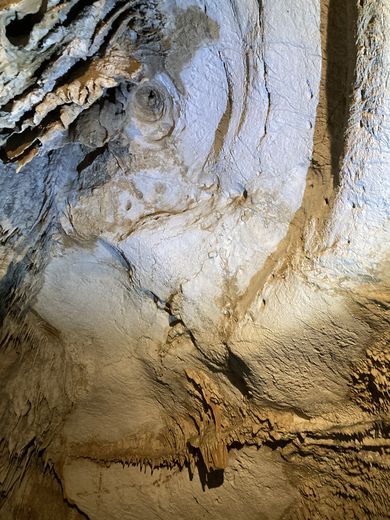
At the top, a bell-shaped hole, a trace of bat occupancy. Midi Libre – E.L.
If, logically, the guano is found on the ground, the presence of bats also had an impact on the ceilings. "We are in the process of establishing a catalog of shapes with the Conqueyrac cave as a reference model." While breathing, the creatures released some CO2 and water vapor: bell-shaped holes have been dug in the rock, particularly limestone.
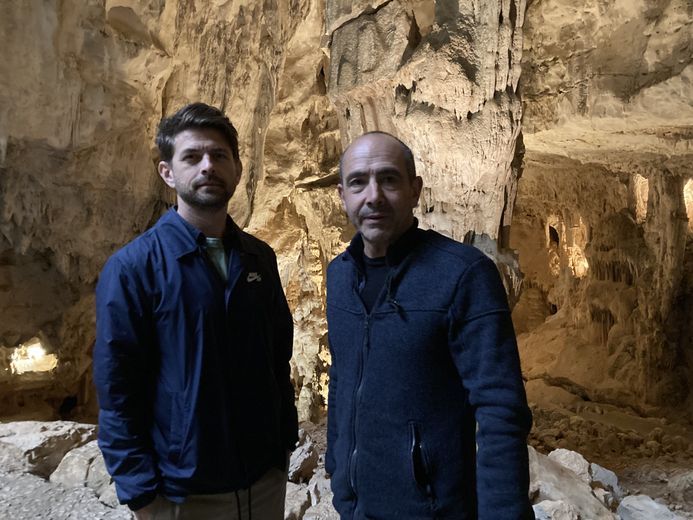
Arnaud de Grully and Laurent Bruxelles. Midi Libre – E.L.
On the ground, their droppings released sulfuric or nitric acids, and condensation on the walls gave them a smooth appearance. In the Demoiselles cave, we observe "tinaritas" or guano pots, small rounded hollows, caused by a large horseshoe bat (or a succession of several) hanging above. Or even stalactites presenting a strange shape of grooves, "the guano has certainly eaten away this pillar. Until now, it was said that the river must have risen, but the Hérault flows 200 meters lower, biocorrosion is a much more serious explanation, analysis Arnaud de Grully, who observes the places he operates with his family with a fresh perspective "c’is a bit like a crime scene, we look for clues& hellip;" "On the scale of a cavity, of a massif, we make the void speak" adds Laurent Bruxelles.
Arte has dedicated a documentary to Laurent Brussels: Africa: on the trail of the first men.
Researcher
Originally from Montpellier, Laurent Bruxelles is first and foremost an experienced speleologist. For fifteen years, he led groups in the Trabuc cave (Gard) before returning to his studies and completing a thesis in geography at the faculty of Aix-en-Provence. He completed his training in geo-morphology in Belgium and this extremely rare specialty interested Inrap (national research institute in preventive archaeology). His knowledge of the underground world quickly brought him back to the caves and a team of paleonthologists called him to South Africa where in 2015 he participated in the discovery of "Little Foot" this Australopithecus older than Lucy. Seconded to Johannesburg for three years, he obtained the CNRS bronze medal. It is today attached to the Traces laboratory in Toulouse.
I subscribe to read more




